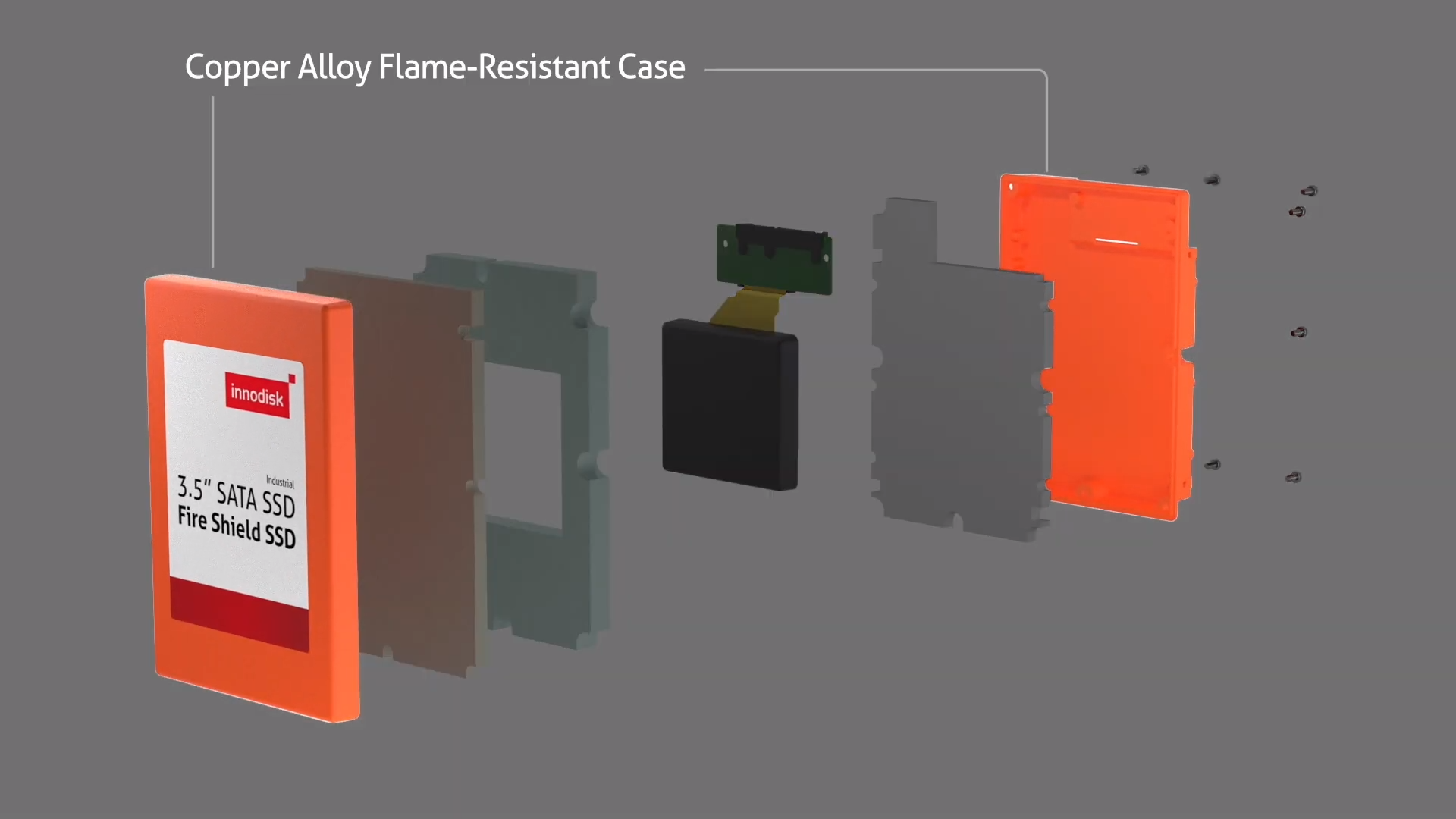Innodisk's New Fire Shield SSD Can Withstand 800C for 30 Minutes
Innodisk has announced the company's latest Fire Shield SSD, which is capable of withstanding temperatures of up to 800 degrees Celsius for more than 30 straight minutes.
The Fire Shield SSD features a 3.5-inch design and has up to three layers of protection. The first enclosure consists of a flame-resistant copper alloy material, while the second is made from a heat-isolating lining material. The SSD itself is housed inside a third protective enclosure. With over 20 heat-resistant materials in its design, the Fire Shield SSD is not only fireproof but also resistant to vibrations and impacts.
Innodisk created the Fire Shield SSD for the sole purpose of protecting valuable data in Black Box applications. The drive can survive for more than 30 minutes at temperatures the scale up to 800 degrees Celsius. Obviously, you can't just go connecting the Fire Shield SSD to your system to recover the data after it has been exposed to extreme heat during a prolonged period. Instead, an Innodisk engineer will have to extract the integrated chips and perform data recovery on them with a specialized machine.
Inside of the robust enclosure, the Fire Shield SSD is everything you would expect from a normal SATA SSD. It still speaks with your system through a SATA III port. However, the drive does utilize SLC (single-level cell) or iSLC (Inno single-level cell) NAND chips for maximum endurance and reliability. According to Innodisk, the SLC chips have a program-erase (PE) cycle of 60,000 cycles while the iSLC ones are rated for 20,000 cycles. The Fire Shield SSD delivers sequential read and write speeds up to to 520 MBps and 360 MBps, respectively. Innodisk offers the drive in capacities of 8GB, 16GB, 32GB, 64GB and 128GB.
Innodisk didn't mention the pricing or availability of its Fire Shield SSDs.
Get Tom's Hardware's best news and in-depth reviews, straight to your inbox.

Zhiye Liu is a news editor, memory reviewer, and SSD tester at Tom’s Hardware. Although he loves everything that’s hardware, he has a soft spot for CPUs, GPUs, and RAM.
-
NightHawkRMX That is legitamately impressive.Reply
Unlike an HDD it won't die easily if dropped or shook violently. -
digitalgriffin The weak point here are the power and data cable connectors. You really can't protect those as they have to be exposed. So this is likely why you have to send the drive back to "extract the chips" as the interface will have melted/burned off. If they designed it intelligently they would have used opto isolation so the heat can't transfer via the burning connectors.Reply
I wonder if it's using ceramics or ablative type shielding?

